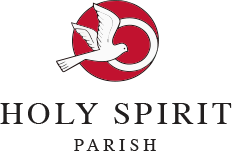
The Jewish Root of the Mass
By Brant Pitre, PhD.
One of the most common questions asked during Liturgical and Sacramental catechesis is this: “Why do Catholics do that?” In other words, what are the roots of Catholic Liturgical worship? Where does Catholic worship come from, and what light might its origins shine on its present day meaning?
One of the most fascinating ways of answering such questions is to reach back to the biblical foundations of the Mass. In fact, to properly understand the Eucharistic faith and practice of Christianity, one has to go back not only to the New Testament, but also to the Old Testament and ancient Jewish practice and belief. As the Catechism of the Catholic Church teaches, “A better knowledge of the Jewish people’s faith and religious life as professed and lived even now can help our better understanding of certain aspects of Christian liturgy” [CCC, 1096]. In other words, to understand “Christian liturgy,” we must first understand “Jewish liturgy” [CCC, no. 1096].
The New Passover
In the Old Testament, the biblical Passover is described in great detail in the Book of Exodus chapter 12. Here, we find that the feast of Passover (Hebrew pesah; Greek pascha) originates in the famous story of the final plague against Egypt at the time of Moses. This Passover ritual consists of several key steps: (1) sacrifice a year-old unblemished male lamb, (2) dip a branch of hyssop in the blood of the lamb, (3) spread the blood of the lamb on the doorposts and lintels of the home as a sign, and (4) eat the lamb (Ex 12:1-14). It is important to emphasize here the fourth step: In the Old Testament, the Passover ritual is not completed by the death of the sacrificial lamb. It is completed when the Israelites eat the “flesh” of the lamb that is slain so that they might be delivered from bondage in Egypt and, ultimately, from death (Ex 12:8).
In ancient Jewish tradition, the biblical Passover developed and underwent certain changes and additions. For one thing, the eating of the Passover lamb and unleavened bread was accompanied by the drinking of multiple cups of wine; four, to be exact.
As part of the celebration of the Passover meal, the father of the household would say the following blessings over the Passover bread and wine (see Mishnah, Berakoth [Blessings] 6:1): “Blessed are you, O Lord our God, who brings forth bread from the earth.” “Blessed are you, O Lord our God, King of the Universe, who creates the fruit of the vine.” Anyone familiar with the blessings over the bread and wine at Mass will immediately see how these ancient Jewish blessings are almost identical to what the priest says in Mass today.
With Jewish Scripture and tradition in mind, we can see clearly how it is that the first Christians—who were Jewish Christians—understood the Last Supper and the Christian Eucharist. Above all, they recognized that the Eucharist was the new Passover, in which Jesus had replaced the flesh and blood of the old Passover lamb with his own flesh and blood.
That is why Saint Paul, himself an expert in Jewish Scripture, can write, “Our paschal lamb [Greek pascha] Christ, has been sacrificed. Therefore let us celebrate the feast” (1 Cor 5:7-8). The feast Saint Paul is referring to here is, of course, the Christian Eucharist, the new Passover feast, which, like the Jewish Passover itself, is both a sacrifice and a meal.
And so today, just before Communion, the Catholic priest proclaims to the people of God, “Behold the Lamb of God, behold Him who takes away the sins of the world. Blessed are those called to the Supper of the Lamb” (Communion Rite). In the new Supper of the Lamb, Christ is indeed the Lamb of God who takes away the sins of the world (Jn 1:29).
Image from: marthaartess on https://www.cathopic.com/



 © 2021 Holy Spirit Parish
© 2021 Holy Spirit Parish